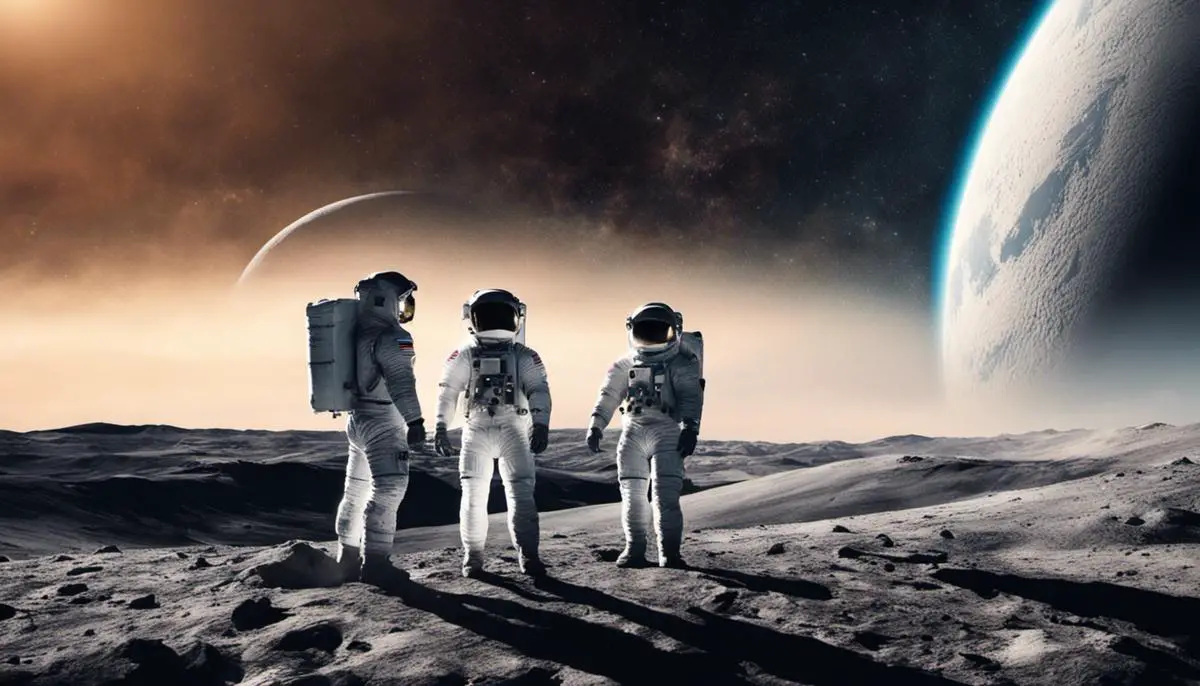The transformative Apollo moon missions, spanning from Apollo 1 to Apollo 17, have left an indelible imprint on the trajectory of human history, occupying an undisputed place of honor on the timeline of significant human achievements. Underpinning the exploration of our next-door celestial neighbor was not just a monumental technological endeavor—an unparalleled symphony of science, technology, intellect, and courage—but also a cultural phenomenon that forever changed our self-perception, societal fabric, and collective consciousness. Beyond the boundaries of America’s ambitions and aerospace excursions, the Apollo missions have profoundly shaped and continue to influence an array of diverse aspects, from our national identity to scientific advancements and cultural expression, to our future spacefaring aspirations.
Contents
- 1 The Historical Significance of the Apollo Moon Missions
- 2 Influence on American National Identity and Pride
- 3 Impact on Science and Technology
- 4 Influence on Art, Literature, and Popular Culture
- 5 Implications for Modern Space Exploration
- 5.1 Continued Legacy of the Apollo Missions
- 5.2 Innovation and Progress: The Effect of Apollo Missions on Modern Space Technology
- 5.3 Inspiring Future Generations
- 5.4 Cultural Capture of the Apollo Missions
- 5.5 Continuous Voyage: The Spirit of Apollo Missions Today
- 5.6 The Apollo Missions and the Search for Extraterrestrial Life
- 5.7 Influence on Society’s Perception of Space
- 5.8 The Magnitude of the Apollo Effect
The Historical Significance of the Apollo Moon Missions
The Apollo Moon Missions: A Historical Overview
The Apollo program, run by the National Aeronautics and Space Administration (NASA), was a monumental effort to land humans on the moon and bring them safely back to Earth. Over the course of 11 years, from 1961 to 1972, the program took a total of 12 astronauts to the moon and back. Each mission built on the accomplishments and lessons of the previous one, culminating in the successful accomplishment of the Apollo 17 mission.
Apollo 1 was the first mission of the program but tragically ended in a fire during a launch pad test that claimed the lives of all three astronauts. While the disaster briefly halted the program, it also led to extensive changes in design and procedures to increase safety. Apollo 7, then, became the first successful manned Apollo mission, and it tested the command module in Earth’s orbit.
Apollo 11, which took place in 1969, achieved the primary goal of the program: landing humans on the moon. This mission, manned by astronauts Neil Armstrong and Buzz Aldrin, brought humans to the lunar surface for the first time, marking a major milestone in human exploration and achievement. Armstrong’s words upon setting foot on the surface, “That’s one small step for man, one giant leap for mankind,” were immediately engraved into the tapestry of human history.
Cultural Influence of The Apollo Moon Missions
The Apollo missions dramatically reshaped both American and global cultures. These historical moon landings sparked an international fascination with science and space exploration, boasting of humanity’s potential and inspiring optimism worldwide. Iconic images of astronauts stepping foot on the moon’s surface became globally recognized symbols of human accomplishment.
Amidst the onset of the television era in the 1960s, the Apollo missions also marked a new epoch of live global news coverage. The moon landings were showcased to millions of viewers in real-time, immersing audiences worldwide in the thrilling intricacies of space exploration and promoting a democratized access to this groundbreaking scientific event.
The influence of the moon landings also permeated the realms of fashion and design. Elements such as astronaut gear, mission patches, and the moon’s otherworldly landscape became prevalent in a variety of lifestyle spaces, from clothing, on-trend furniture designs, architecture, to automotive styling. Additionally, a flood of space-themed toys, games, and children’s books took over, fostering the fascination for space, science, and exploration among the younger generation.
Popular culture saw the Apollo missions recur in the form of various expressions, be it through science-fiction narratives, movies, documentaries or historical dramas. These missions became a ubiquitous motif across different media outlets.
The Apollo missions also played a significant role in fortifying American national pride during the tense period of the Cold War. These successful lunar missions marked a significant milestone in the technological rivalry with the Soviet Union, transforming the endeavor of space exploration into a display of national competence and scientific expertise. The moon landing, hence, was not just an achievement in space travel but a potent geopolitical emblem.
Standing the test of time, the cultural influence of the Apollo moon missions continues to uplift and inspire generations. Beyond mere space and scientific achievements, these missions signify human resilience and the undying spirit of exploration, resonating deeply within the historical and cultural narrative.
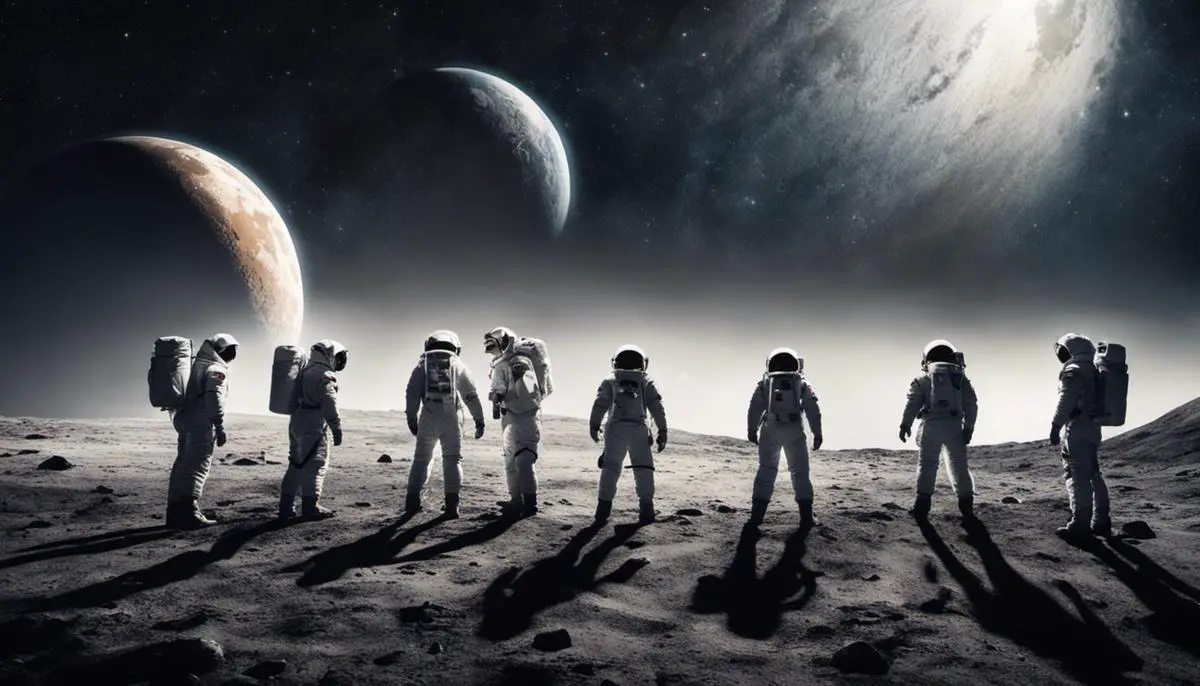
Influence on American National Identity and Pride
Apollo Moon Missions and National Pride
NASA’s Apollo moon missions, which occurred between 1968 and 1972, served as a testament to the spirit of American innovation. These missions sent a total of 12 astronauts to the moon, an accomplishment yet to be matched by any other nation. As a result, “first in space” became a badge of honor, a testimony to the nation’s technological competency and innovation—two defining pillars of the American identity.
The backdrop of these achievements is found in the Cold War era, characterized by a fierce rivalry between the USA and the Soviet Union. The role of the Apollo missions in helping America gain the upper hand in the so-called ‘space race’ fuelled a surge of national pride among Americans. The triumph of the Apollo missions—as premier examples of technological leadership—further solidified America’s reputation as an international leader in science and technology, resonating with a sense of patriotic pride across the nation.
Perpetuation of Apollo’s Influence
Technological accomplishments of the Apollo missions fostered the growth and development of an innovation-driven culture. They spurred interest in science, technology, engineering, and mathematics (STEM), motivating many students to pursue careers in these fields. The imagery of astronauts walking on the moon inspired a new generation of thinkers, inventors, and scientists.
In pop culture, the Apollo missions have often been glorified and romanticized in films, TV series, books, and songs. Films such as “Apollo 13” and “Hidden Figures” not only entertained but also educated the public about the complexities and excitement associated with space exploration. Furthermore, phrases like “Houston, we have a problem” and “one small step for man, one giant leap for mankind” are engrained in the American vernacular.
Apollo’s Influence in Contemporary Times
The era of Apollo is still celebrated in America for its remarkable achievements and its testament to human fortitude and intellect. Modern missions like Mars Rovers and Artemis, the program aiming to once again put humans on the Moon, are harbingers of a new era of space participation from the public. They serve as reminders of America’s pioneering spirit and continue to captivate public interest in space exploration.
Culture and society continue to feel the reverberations of the Apollo moon missions, leading to the creation of a space-enthusiast community. In the consumer market, products like space food, space-themed toys, and apparel have made their mark. Moreover, the Apollo missions also paved the way for the booming private space industry, with companies such as SpaceX, Blue Origin, and Virgin Galactic striving to make space travel accessible to civilians.
The Apollo moon missions have had an immeasurable impact on society, cultivating a sense of ambitious curiosity within the American cultural landscape. They’ve instilled an enduring ethos of exploration and innovation that has shaped our national identity and continues to resonate in modern times.
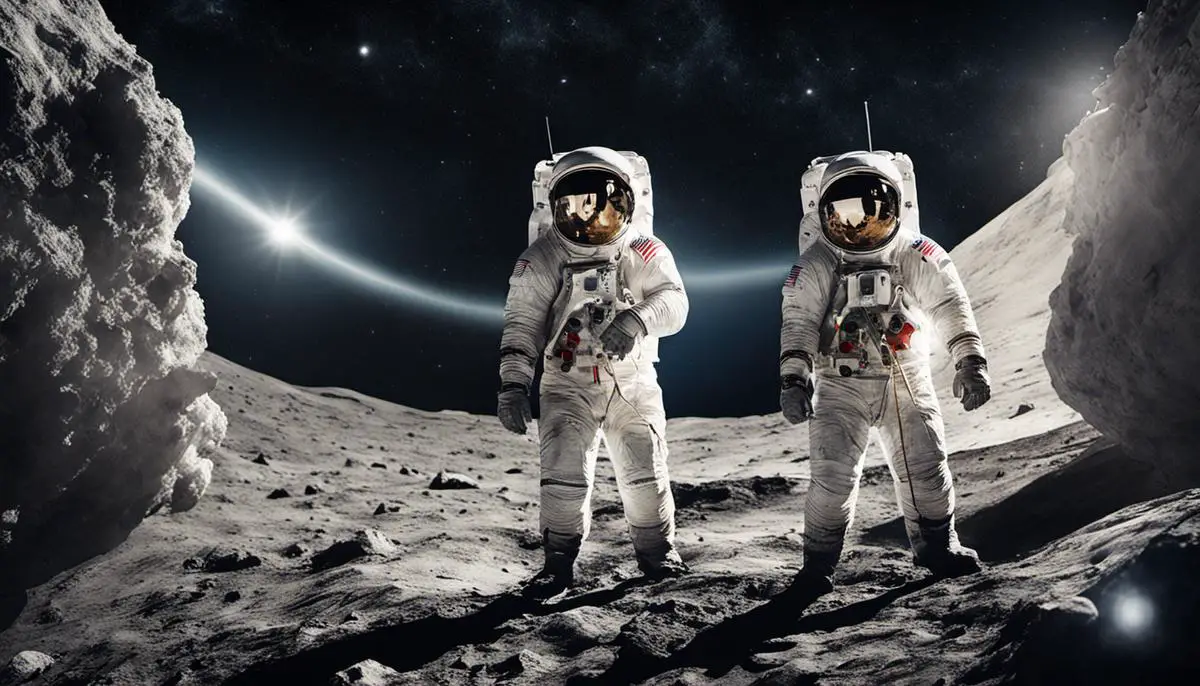
Impact on Science and Technology
The Ripple Effect of Technological Innovations from Apollo Missions
The drive to land a man on the moon resulted in an astonishing surge in technological advancements. Significant investments were channeled into NASA’s research and development, yielding a plethora of groundbreaking innovations. Many of these moon-mission-born inventions have been incorporated into our day-to-day lives, influencing diverse fields such as communication, transportation, and medicine.
Life-Saving Medical Technology
Medical technology is one of the sectors that greatly benefited from the Apollo missions. Perhaps one of the most significant medical engineering feats that can be traced back to NASA’s Apollo program is the invention of the digital signal processing techniques. These were initially developed to facilitate the clear transmission of astronauts’ vital signs from space. This technology found application in the development of Digital Imaging and Communications in Medicine (DICOM) systems and is now used in most modern hospitals to enhance image clarity in CAT scans, MRI scans, and other forms of medical imaging.
Another advancement derived from the Apollo program is the infrared ear thermometer. This device uses infrared astronomy technology that was originally developed to measure the temperature of stars and planets. Nowadays, it provides quick and accurate body temperature readings, proving crucial in critical medical situations.
Communication and Transport Advances
The Apollo missions were also instrumental in the evolution of communication technology. The drive to communicate seamlessly with astronauts in space led to improvements in satellite technology. Advanced satellite systems not only transformed the ways we communicate globally but also proved pivotal in weather forecasting and navigation systems. GPS technology, to start with, has its roots in the Apollo missions.
The development of heat-resistant materials for spacecraft re-entry also led to significant advances in transportation. Such materials are now incorporated in the manufacturing of items such as firefighter equipment, aircraft, and even kitchen products. These materials are characteristically lightweight, yet highly durable and resistant to extreme temperatures, increasing the safety and efficiency across diverse applications.
Culture Shift
The cultural impact of the Apollo moon missions cannot be overstated. As the world watched astronauts set foot on the lunar surface for the first time, it sparked a profound shift in global consciousness. The moon landing inspired generations to dream big, pursue careers in science and technology, and believe in the power of human endeavor and innovation.
The Apollo project implanted the idea that nothing is impossible if sufficiently pursued. This newfound belief resonates in today’s culture where technological breakthroughs, once imagined only in science fiction, have become a reality. From reality television shows about space tourism to a surge in courses and careers related to space science, the influence of the Apollo Mission permeates across various aspects of modern society.
The Impact of Apollo Missions
Half a century has elapsed since mankind’s first steps on the moon through the Apollo missions, yet their influence continues to be woven through various aspects of society. The cultural, technological, scientific, and artistic realms all bear the mark of these historic missions. The Apollo program was a stunning era of innovation whose echoes continue to shape our day-to-day lives, casting a spotlight on our capacity to reach astonishing heights when we rally behind a shared objective.
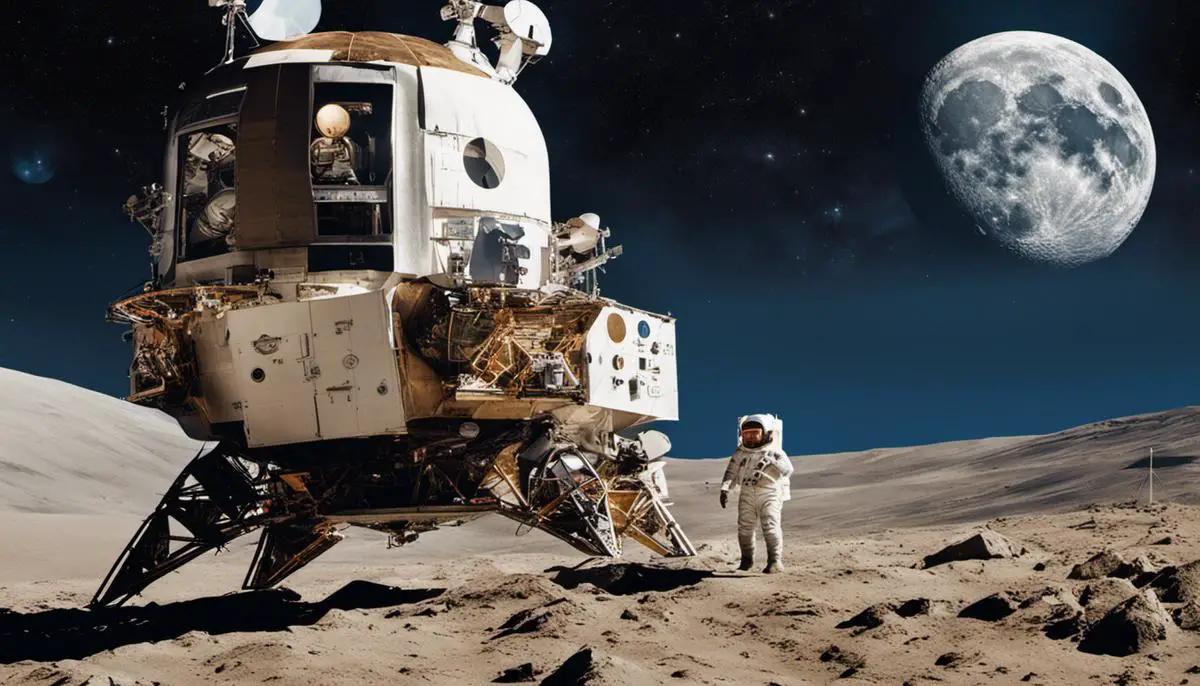
Influence on Art, Literature, and Popular Culture
Cultural Influence of the Apollo moon missions
The Apollo moon missions, a crowning achievement of human ingenuity, have since their inception in the late 1960s, etched an indelible influence on the world’s culture across multiple forms of art – music, film, literature, and visual arts. The awe-inspiring milestone of humans setting foot on a different celestial body stirred a wave of creativity, leading artists to delve into themes of space exploration, the vulnerability of our planet, and humanity’s place within the cosmos.
Musicians
worldwide were moved by the manned lunar missions, sparking a myriad of compositions embracing the emotions and spirit of the Space Race. Pink Floyd, notably, famously played their experimental track “Moonhead” during the actual moon landing, broadcasted by BBC1. David Bowie’s 1969 hit single “Space Oddity” mirrored the anxiety and excitement of the space exploration era. More recently, popular artists like BTS incorporated moon themes in their songs like “Moonchild” and “134340”, evidencing the lasting influence of Apollo missions.
Cinema and Television
The impact of the Apollo missions is profound. Many filmmakers have chronicled the challenges and triumphs of the moon missions, creating immersive narratives like Apollo 13 and The Right Stuff. The documentary, For All Mankind, is composed of original NASA footage, narrating the Apollo missions through the astronauts’ experiences. Additionally, the moon missions have inspired science fiction films, with Stanley Kubrick’s 2001: A Space Odyssey, released a year before Apollo 11, is believed to be influenced by the impending moon landing.
Literature
both fiction and non-fiction, has been significant. Numerous works detail the moon missions or draw inspiration from the larger theme of lunar exploration. Norman Mailer’s “Of a Fire on the Moon” accounts the Apollo 11 mission with a blend of reportage and poetic introspection, manifesting the societal fascination with space travel. The sci-fi genre propelled, with authors like Arthur C. Clarke crafting masterpieces inspired by the moon missions, exploring space’s profound metaphysical implications.
Visual arts
there is a surge in the use of space themes post-Apollo missions. Artists like Robert Rauschenberg were commissioned by NASA to create works celebrating the Apollo 11 mission. The blend of scientific imagery with artistic expression in such works embodies the era’s zeitgeist of collective excitement and fear.
Fashion
The moon missions have also influenced fashion, with “space-age” fashion peaking in the late 1960s. Innovations like plastic, vinyl, and various synthetic fabrics gained popularity. Futuristic silhouettes, metallic and white color palettes, and helmet-like hats were trendsetters, encapsulating the visionary spirit of that era.
Education
The space race spurred increased emphasis on science, technology, engineering, and mathematics (STEM) in curricula worldwide, creating a generation more invested in these fields, a trend visible even today.
Impact of Apollo Moon Missions on Culture
The historic Apollo moon missions have undeniably left a profound impact on various facets of our culture. These missions served as a catalyst for an era of exploration, fostering our imaginations of the cosmos and influencing our perception of mankind’s role within it.
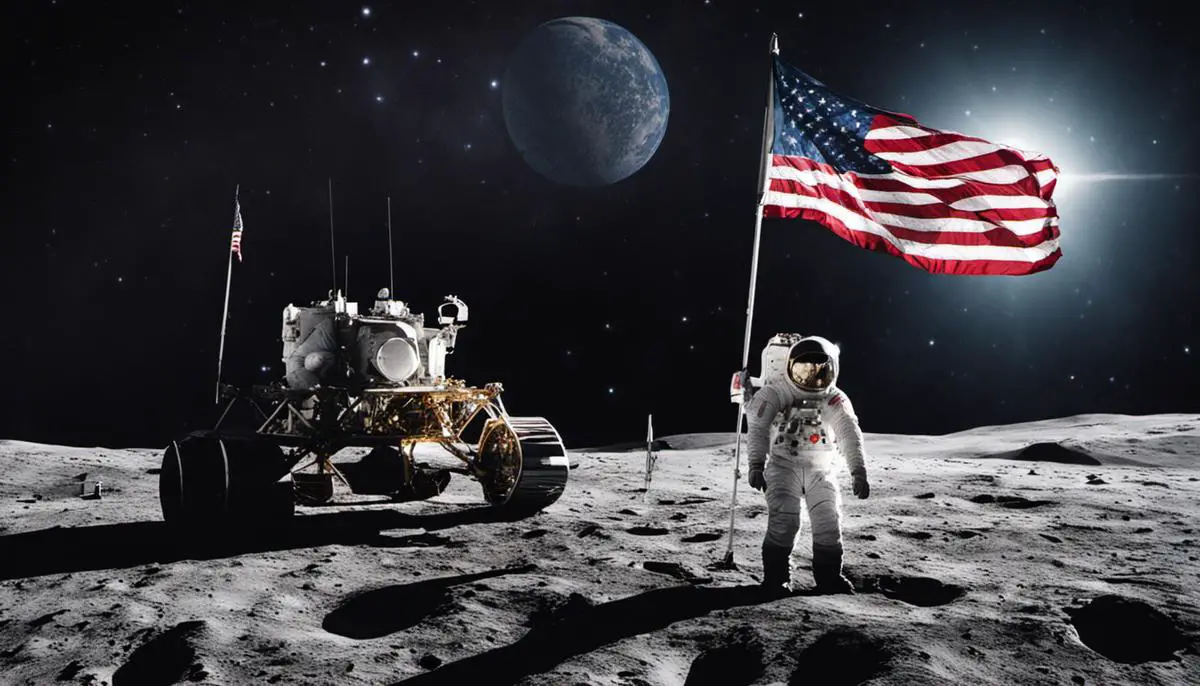
Implications for Modern Space Exploration
Continued Legacy of the Apollo Missions
Running from 1968 to 1972, the Apollo moon missions stand as significant milestones in the history of American space exploration and continue to resonate and inspire contemporary space expeditions. The successful execution of these lunar missions sparked worldwide interest in outer space exploration, fueling curiosity towards the exploration of uncharted territories, the discovery of potential extraterrestrial life, and the exploration of human limits.
Innovation and Progress: The Effect of Apollo Missions on Modern Space Technology
The technological innovations that facilitated the Apollo missions have decisively shaped contemporary space exploration initiatives. The principles mastered during Apollo, from precise navigation to reflecting on the lunar surface, contribute to current projects such as satellite operations and Martian landing. Furthermore, lessons learned from the Apollo missions’ safety issues continue to enhance the process of spacecraft design, ensuring better safety for future explorers.
Inspiring Future Generations
The influence of the Apollo moon missions permeates not only into technical and scientific spheres but also into cultural and educational domains. These missions have shifted perceptions about space, fostering a sense of unity and sparking the public interest in cosmic exploration and science. The iconic images of astronauts on the moon have also become perennial sources of inspiration for future generations, setting the precedent for space travel while making it a tangible reality.
Cultural Capture of the Apollo Missions
The global enthusiasm triggered by the Apollo missions subsequently manifested in various cultural mediums. Literature, film, and television embraced the theme of space exploration, reflecting the lasting fascination of society with outer space. From adventure-packed narratives to profound sci-fi dramas, the Apollo missions have been consistently immortalized in popular culture.
Continuous Voyage: The Spirit of Apollo Missions Today
The influence of the Apollo missions continues to pervade present-day space pursuits. With projects like the Artemis program, which aims to send astronauts back to the moon, the spirit of Apollo is being revived. This endeavor is projected to further the human understanding of the moon and secure the technological advancements necessary for ambitious space missions, like the exploration of Mars. The Apollo legacy therefore persists in contemporary space exploration, exemplifying how far humankind has come and how far we aspire to go.
The Apollo Missions and the Search for Extraterrestrial Life
The Apollo missions have also brought into public consciousness the concept of extraterrestrial life. While the moon missions did not yield any evidence of life beyond Earth, they significantly stimulated the scientific and public curiosity about the possibility of its existence. This spurred further space endeavours and research efforts into unexplored parts of the solar system, thereby broadening the breadth and scope of astrobiology.
Influence on Society’s Perception of Space
The Apollo missions have substantively altered people’s perception of space. Prior to Apollo, space was largely conceived of as an inaccessible realm, beyond man’s control. By successfully landing astronauts on the moon and bringing them back to Earth, NASA steeply enhanced the understanding and approachability of space among the public, convincing them of humanity’s astounding potential to explore and conquer new realms.
The Magnitude of the Apollo Effect
The comprehensive cultural impact of the Apollo missions is immeasurable. The successful voyages not only revolutionized the realm of space technology, but equally reshaped the cultural, educational, and societal milieu. The Apollo missions’ aura still commendably pervades contemporary thought, enlightening the boundless capacity of mankind to review, recreate, and ride past the horizons of known limitations.
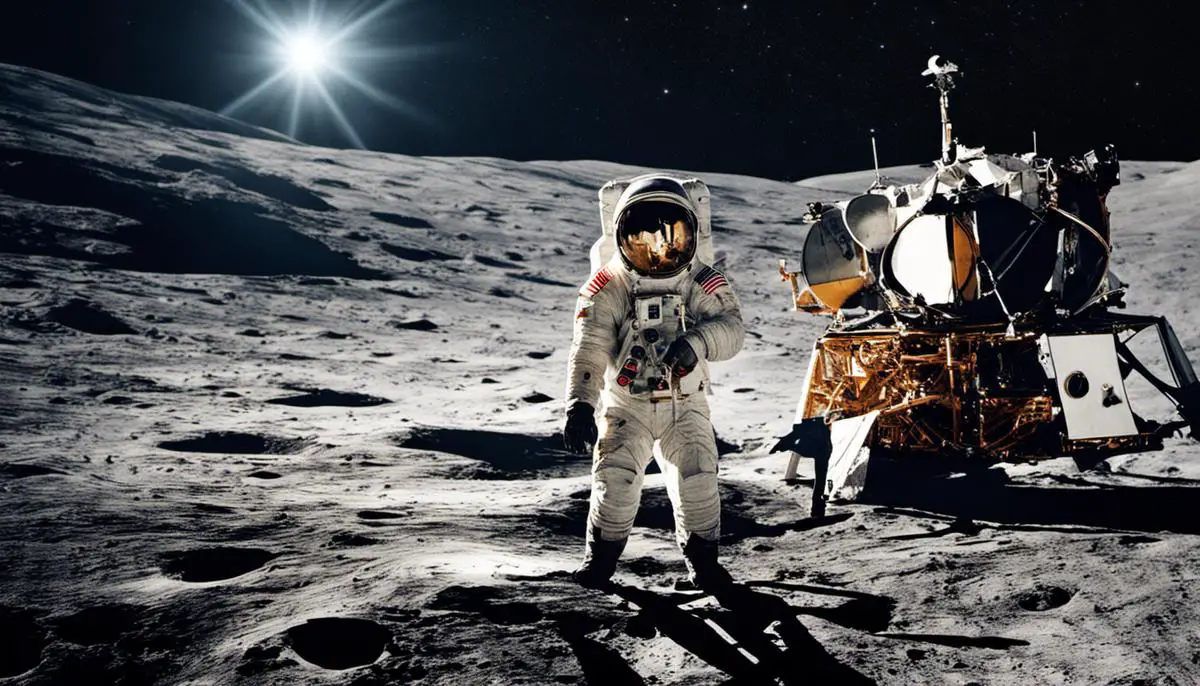
The Apollo moon missions continue to reverberate through our society’s fabric, extending their influence far beyond the fleeting moments when human bootprints first disrupted the lunar dust. These missions not only announced the arrival of humans on the extra-terrestrial stage but also changed the way we perceive ourselves, celebrate our triumphs, approach our scientific endeavors, express our creativity, and envision our place in the cosmos. As we continue to pierce the veil of space, the legacy of Apollo guides our steps—its echo can be heard in our technological innovations, seen in our cultural creations, and felt in our national sense of self. Henceforth, as we relentlessly push the boundaries of our celestial neighborhood, the Umbra of Apollo will serve as a testament to not just the triumphs of the past but persist as a beacon illuminating the pathways of future space exploration possibilities.

With a passion for unraveling the mysteries of the moon, Dr. Luna Sterling is a highly-respected astrophysicist, a dedicated lunar enthusiast, and a captivating blogger. After earning her Ph.D. in Astrophysics from the Massachusetts Institute of Technology (MIT), she served as a lead scientist and mission planner for NASA, contributing significantly to various lunar missions.
For over two decades, Luna has been at the forefront of lunar science, pushing boundaries and pioneering discoveries that have enriched our understanding of the moon’s geological history. However, it’s her infectious enthusiasm for all things lunar that truly sets her apart.
In an endeavor to bring the moon closer to everyone, Luna started her blog, “Luna’s Lens: A Closer Look at the Moon.” With this platform, she offers a unique blend of intriguing moon facts, updates on lunar missions, and personal anecdotes from her experiences in the field, all told in an engaging and accessible manner.
Luna’s unique blend of scientific expertise and warm, humorous writing style has transformed complex astrophysics into compelling narratives that captivate her audience. As a gifted communicator, she leverages her knowledge and experience to relate scientific facts to everyday life, thus making her blog a must-read for both seasoned space enthusiasts and curious newcomers.
Interactive and inviting, Luna frequently encourages reader engagement through thought-provoking discussions and a monthly ‘Ask Dr. Luna’ feature, where she personally answers questions about the moon and space exploration. A celestial storyteller at heart, Dr. Luna Sterling’s passion for the moon is as vast as the cosmos she explores, making her an invaluable beacon in the world of lunar science.
